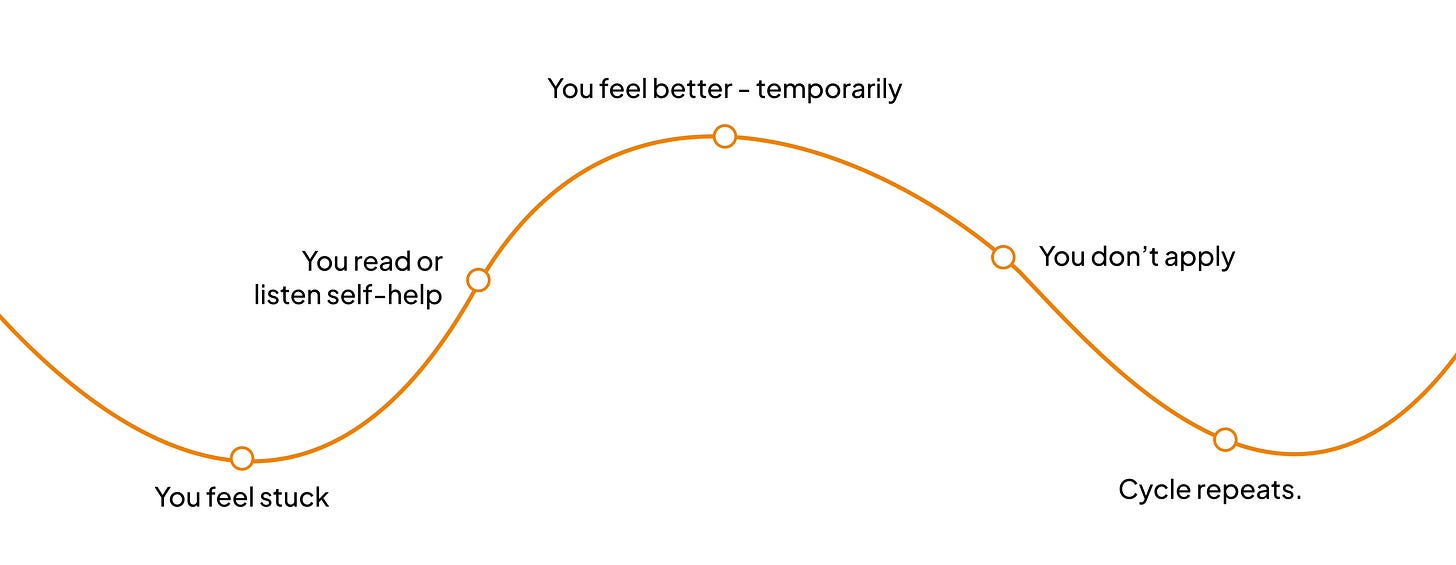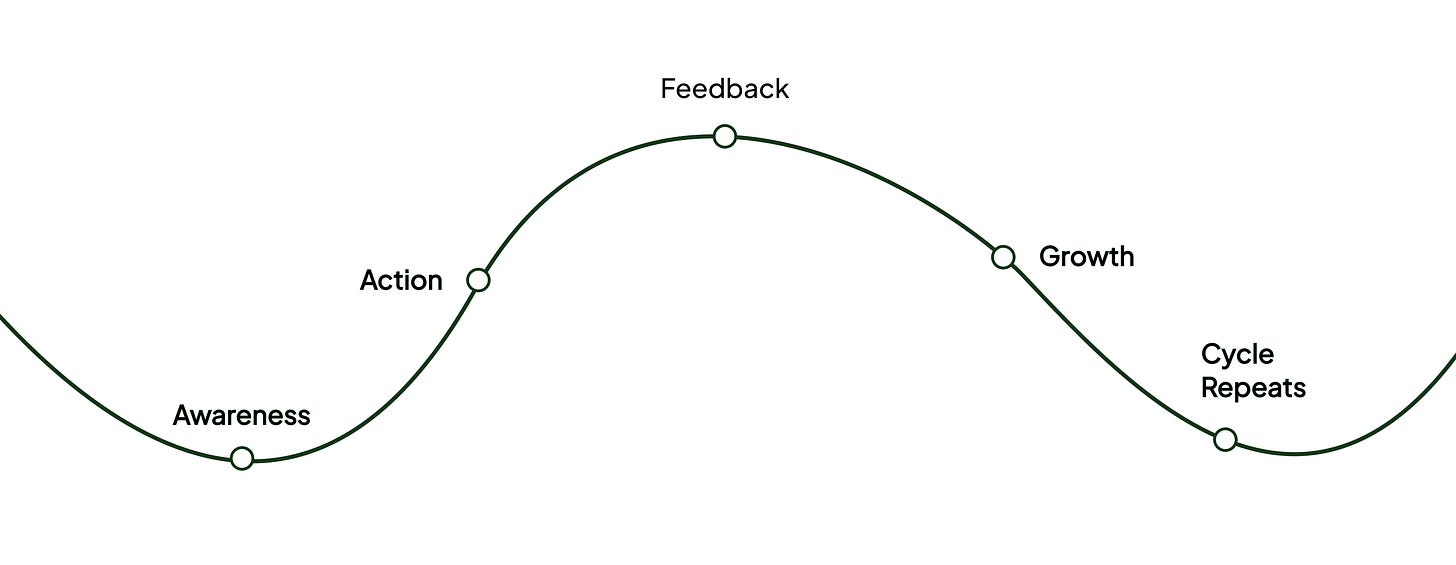Professionals today have an odd problem.
We have more access to knowledge than ever.
books
podcasts
newsletters
videos.
Every day brings a new idea that promises to change our lives.
But despite all this learning, very little changes.
We feel inspired, even energized — then stuck.
We understand more, but we grow less.
The issue isn’t the quality of what we consume.
It’s about what happens next.
In this post, we’ll dive deep into this problem.
We’ll solve it.
And see how AI fits in.
The Self-Help Trap
Let’s be clear: self-help isn’t bad.
For many professionals, it’s the first spark.
But too often, that spark never catches fire.
It gets trapped.
Here’s what that trap looks like:
You feel stuck or restless.
You read something smart or inspiring.
You feel better — briefly.
You apply nothing.
Weeks go by. You do it all again.
This is not real growth.
It’s a loop.
And the more we do it, the harder it becomes to tell the difference.
How To Use Self-Help as a Career Tool
To escape the trap, we must treat self-help as a tool.
Books and podcasts are raw material.
What matters is how you apply them.
Real progress starts when you shift from:
Consuming → Implementing
Ideas → Systems
Motivation → Execution
This shift doesn’t require more effort — just a better approach.
And that’s where AI comes in.
AI gives you a way to turn ideas into real, usable change.
It helps you bridge the gap b/w knowing what’s helpful and doing what works.
The Growth Loop
Top performers don’t just learn — they loop.
They follow a cycle that turns information into transformation:
Awareness – They read, listen, and watch to spot blind spots or unlock new possibilities.
Action – They run small, controlled experiments with the new ideas.
Feedback – They track what worked, what didn’t, and why.
Growth – They refine the approach and go again.
This loop turns one idea into insight — and then into skill.
Break the loop, and nothing sticks.
Keep it running, and everything compounds.
But doing this consistently takes structure — and that’s where AI can make all the difference.
How AI Bridges the Gap
Most people use AI to find more knowledge.
The smartest professionals use it to act on what they already know.
Here’s how AI can help you move:
Turn ideas into workflows
Ask AI to take your notes from a book and build them into a daily routine, checklist, or system.
This turns scattered insights into repeatable habits.
Simulate feedback and improve faster
Use AI to test a message, rehearse a pitch, or role-play a tough conversation.
You’ll sharpen your execution before the stakes are high.
Create dashboards and trackers
AI can help you build a dashboard to track the habits you’re working on, the changes you’re testing, and the results you’re seeing.
Customize advice to your context
AI can adapt frameworks to your job, team, or goals — so the guidance you follow actually fits your real world.
The result?
You go from knowing something valuable to doing something valuable — faster, and with less friction.
What Actually Moves the Needle
Let’s bring it back to the real world.
Growth happens when you shift from passive inspiration to active experimentation.
Here’s what that looks like:
You try the ideas, not just admire them.
You drop advice that doesn’t fit, instead of forcing it.
You commit to 1 or 2 changes — and track them for 30–90 days.
You let AI help you automate the boring parts: reminders, routines, refinements.
This is not about being perfect.
It’s about creating momentum. Tiny wins that stack up.
AI can’t grow for you — but it can help you build systems.
Wrapping up
You don’t need more advice.
You need to act on the advice you already have.
You don’t need another breakthrough moment.
You need follow-through.
And you don’t need to do it alone.
AI can help you stay on track — not by thinking for you, but by helping you move faster, learn quicker, and stay consistent.
So pick something.
Build your loop.
And use AI to stay in it.
The learning matters. But what you do with it — that’s what compounds.
Stop reading. Start doing.




